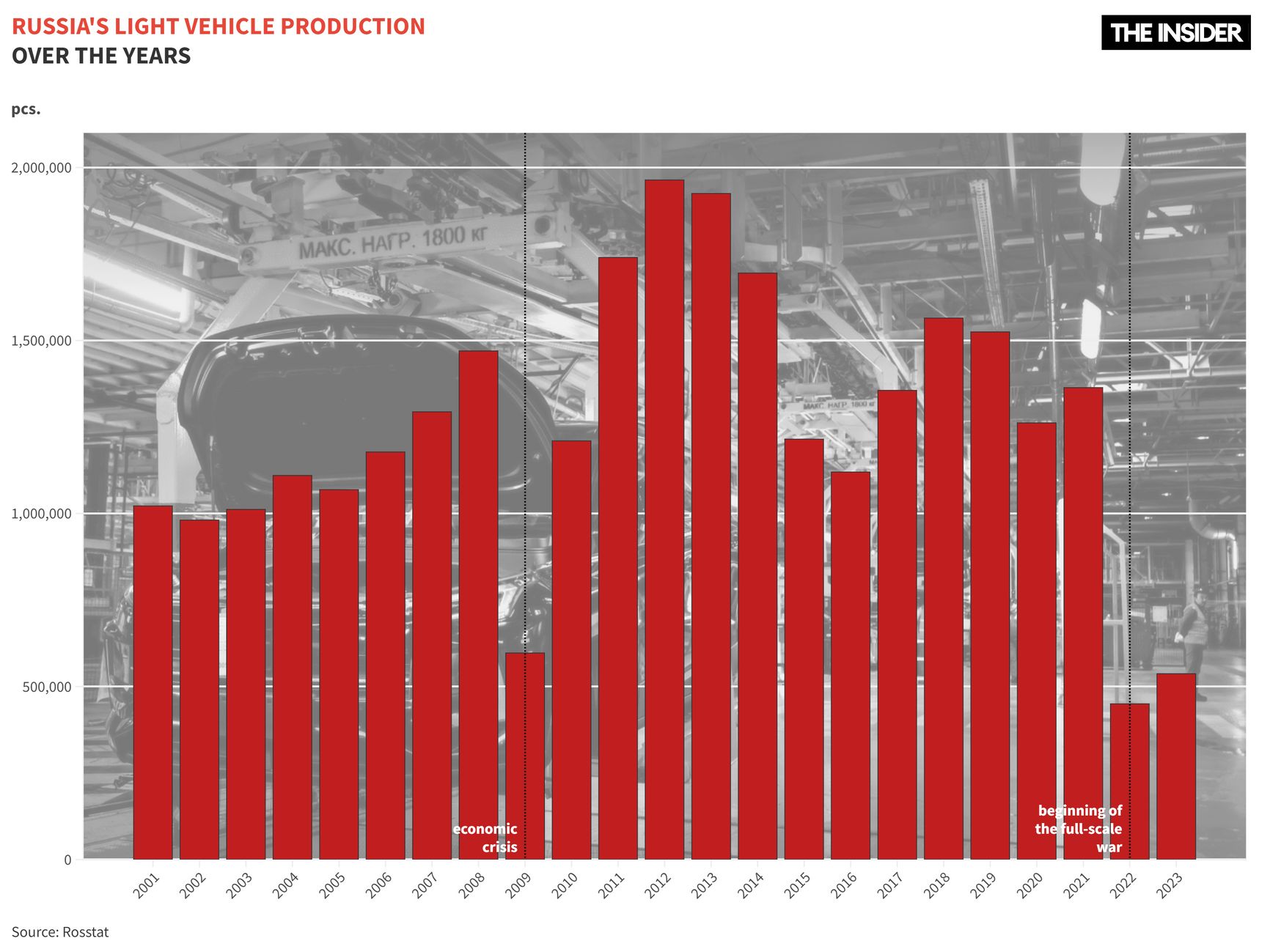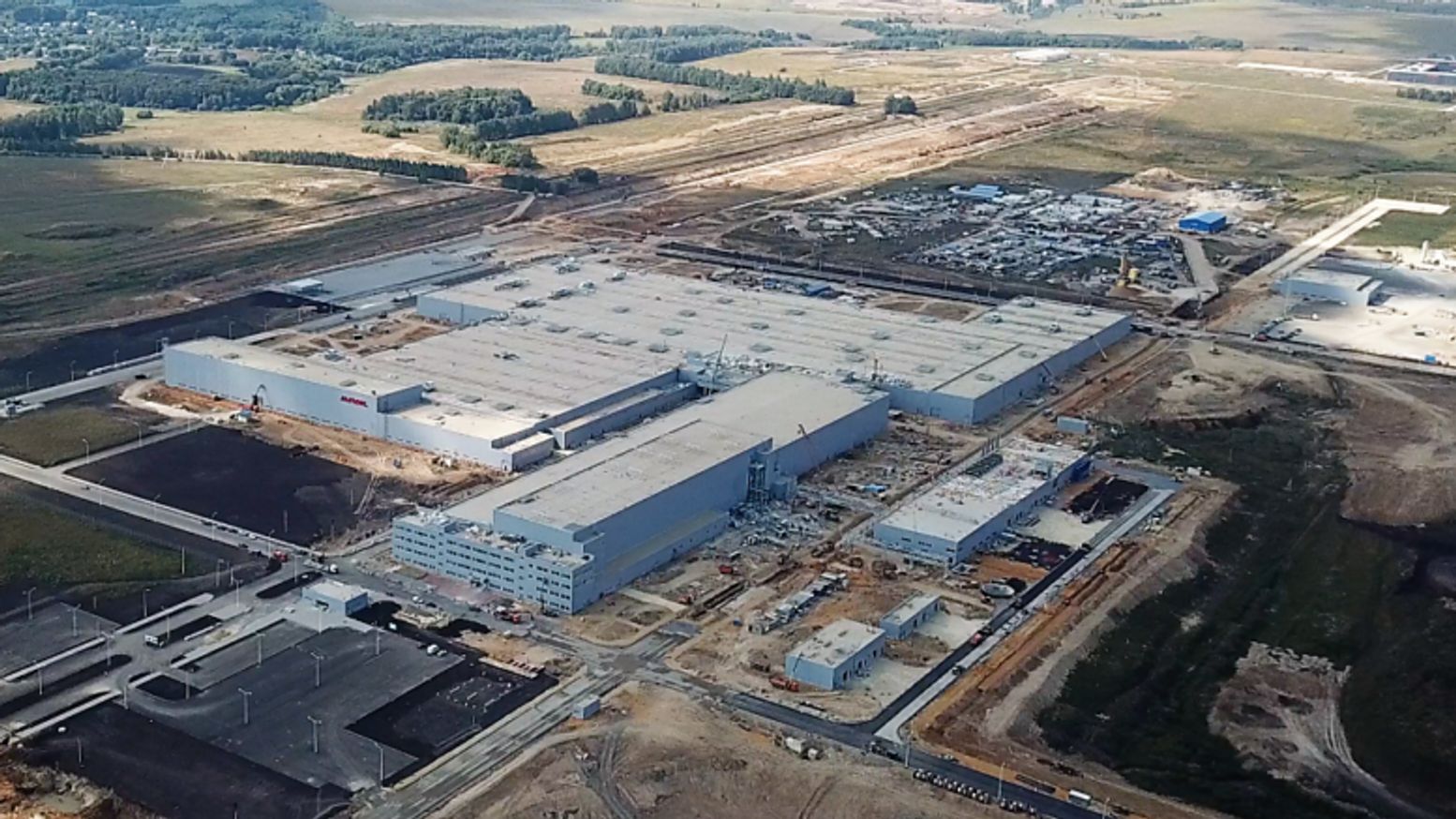China is increasingly dominating the Russian automobile market, now accounting for more than half of passenger car sales. Import growth is already up by a third since the beginning of the year, and it is continuing to rise — Chinese companies expect to sell ten times more vehicles in Russia in 2024 than they did in 2021. However, these automakers are reluctant to invest in local manufacturing plants, limiting themselves to large-unit assembly. As a result, the Russian automobile industry’s reliance on China is deepening, and car prices are rising. This is not what the Russian government had hoped for, and it is now trying to remedy the situation through strict regulation. However, even these coercive measures are unlikely to persuade Chinese companies to make significant investments in Russia — the most-sanctioned country in the world.
The exodus of Western car companies from Russia following Vladimir Putin’s full-scale invasion of Ukraine caught Kremlin authorities off guard. The government responded by confronting foreign businesses and devising a three-step plan to rescue the domestic automotive industry. The first step involved buying out foreign assets at minimal cost, then transferring them to state structures or Russian companies. The second step was to seek partnerships with “friendly” China to resume production based on Chinese brands — in exchange for opening broad opportunities to Chinese businesses in the Russian market. The final step aimed to establish a full cycle of car production with deep localization of key components in order to replace Chinese imports with Russian-made products.
These measures were intended to lead to so-called “technological sovereignty” and increase the share of Russian-made cars from 40% in 2022 to 83% by 2035. However, two years later, it is clear that the industry has been restarted and stabilized, but at the cost of comprehensive dependence on China, dooming the sector to slow and widespread decline, as noted by automotive journalist Sergey Aslanyan in a column for The Insider late 2022.
Pre-war successes and a record in 2012
Before the full-scale war, Russia’s car industry had followed a trajectory similar to that of other industrialized nations. For the two decades leading up to February 2022, the Russian government imposed localization requirements and provided billions of rubles in subsidies to support the purchase of domestically produced vehicles, resulting in below-market-rate interest rates on car loans and leases. State support primarily benefited the largest Russian enterprises but was also extended to many Western companies through customs privileges for importing components and financial compensation for business development costs. As a result, in the 2010s, the share of imported cars in the Russian market quadrupled, while domestic production simultaneously grew, leading to the emergence of world-class plants and large industrial clusters.
In 2012, the Russian car market reached a record high, with over 2.92 million vehicles sold. At the time, manufacturers believed the growth was sustainable and long-term. However, the record set in 2012 was never broken — the market soon entered a prolonged recession, exacerbated by the sanctions related to Russia’s occupation of Crimea, the Covid-19 pandemic, and, ultimately, the full-scale invasion of Ukraine.
Despite the decline in sales, production in Russia was not directly affected. Western car manufacturers continued their operations and did not stop making investments in the country. Nearly all of them committed to new obligations by signing ten-year special investment contracts (SPICs) with the Russian government. A total of 14 SPICs were signed in the automobile industry — including five rather large ones.
Before the war, these Western companies managed to fulfill at least part of their commitments. For instance, Daimler opened a full-cycle automobile plant in the Moscow Region and, together with KAMAZ, started producing truck cabins in Naberezhnye Chelny. Mazda also localized engine production in Vladivostok.
Aerial view of the Haval factory in Russia’s Tula Region, opened in 2019
Chinese automakers, in contrast, have done almost nothing of the sort in Russia — with the lone exception being Great Wall Motor (perhaps best known for its Haval brand), which built an automotive plant in the Tula Region and signed a SPIC in 2020 to localize production of key auto components.
China’s swift market takeover comes without strings, yet cars are not more affordable for Russians
The departure of Western companies after February 2022 led to the shutdown of plants, with sanctions creating significant challenges in sourcing components. The largest post-Soviet decline in the domestic automobile industry quickly followed.

In 2022, Russia produced only 450,000 passenger cars — a staggering 70% drop from the previous year. Sales of new passenger cars also plummeted by nearly 60%.



